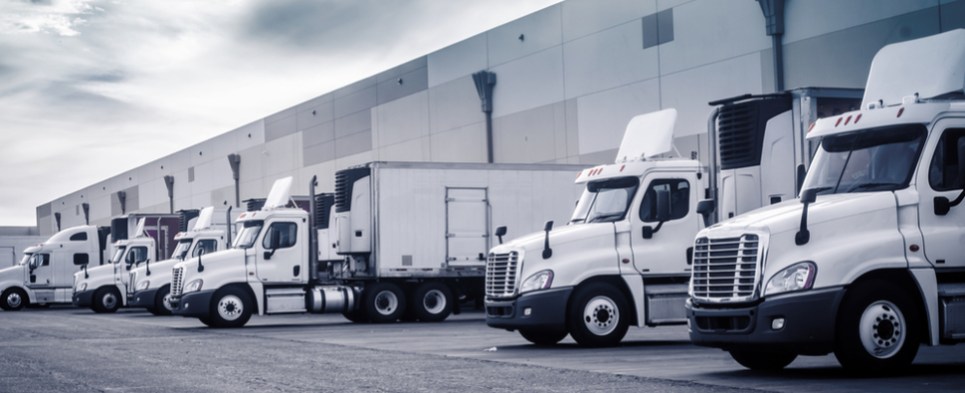Trucking Industry Shows Slight Progress, but a Full Recovery Remains Distant
After 27 consecutive months of declines, the average cost of moving goods by truck is set to rise by 0.2% year-on-year this month. This modest increase has led some to speculate that the trucking recession might be nearing its end. However, many industry insiders remain cautious, awaiting more substantial and lasting signs of recovery before they fully embrace optimism.
Read also: Embracing Inclusivity and Diversity to Solve Labor Shortage in the Trucking Industry
Many in the industry are hesitant to declare a full recovery because rates remain soft due to excess capacity. Morgan Stanley’s Dry Van Truckload Freight Index shows that the 2023 average index remains well below the 10-year average, with 2024 projections offering little improvement. This situation is exacerbated by a 45 percent year-over-year increase in orders for Class 8 trucks, inflating overall motor freight capacity. Consequently, rates have struggled, with DAT Freight and Analytics reporting that spot rates for dry van shipping have fluctuated between $2.01 and $2.20 per mile over the past year. In contrast, contract rates have ranged from $2.48 to $2.73 per mile, significantly down from the peak of $3.28 per mile in June 2023.
Soft rates and excess capacity are a result of the volatility brought on by COVID-19 and the subsequent supply chain crisis. The pandemic saw over 100,000 new registrations for trucking companies. Many of these companies purchased assets at inflated costs, some spending over six figures for a single used truck. When demand suddenly receded in 2022, many of these new companies looked to exit the market. In 2023 alone, more than 1,500 freight brokers and 25,000 asset-based carriers folded, a trend that has continued into 2024. Even the historically stable less-than-truckload (LTL) market has been affected. The bankruptcy of Yellow, one of the industry’s oldest and largest carriers, in August 2023 led to a surge in business for remaining LTL firms as former clients scrambled for new carriers.
Due to outstanding bank loans and prolonged bankruptcies, many unprofitable companies couldn’t smoothly exit the market, creating a bottleneck in capacity reduction. However, there are signs that capacity will exit more rapidly in the near future. For the first time since the pandemic, the number of registration revocations is higher than new registrations. The Federal Motor Carrier Safety Administration (FMCSA) reported a 10.7 percent decrease in brokers and a 7.6 percent decrease in carriers from December 2022 to March 2024.
Looking ahead, the industry’s recovery prospects depend on various factors; Inflation rates, inventory levels, and construction activity will be crucial for boosting demand. The pace of general economic recovery will largely guide the trucking sector.
In the interim, carriers and shippers must adapt their strategies to navigate the challenging landscape. Carriers should focus on process improvements and technology upgrades to better manage costs and optimize asset utilization. Embracing new technologies can enhance operational efficiency, streamline logistics, minimize deadheading, and help identify the best freight matches for their networks. Transitioning from manual planning will offer an opportunity to set new industry standards and improve overall efficiency.
For shippers, diversifying their carrier base will prove crucial. The pandemic highlighted a key vulnerability: over reliance on a few dominant carriers. Shippers must develop a robust network of alternative carriers in the event of geopolitical, environmental, or global health crises. By leveraging advancements in AI and diversifying their carrier networks, shippers can improve service levels and build more resilient supply chains. Technology will also level the playing field, allowing smaller regional carriers to compete by demonstrating their technological capabilities and superior service quality.
The trucking industry’s current challenges present a unique opportunity for digital transformation. Integrating AI and advanced analytics will help the industry move beyond outdated, manual processes and work towards a more efficient and resilient freight ecosystem. These tech investments will come in the form of digital freight-matching platforms, which can enable captive fleet operators to supplement their volume with that of third-party shippers, enhancing utilization and reducing deadhead miles. Route optimization software will further minimize empty miles, and integrated transportation management systems will improve shipment tracking and operational visibility. Additionally, advanced bidding tools will help shippers secure cost-efficient rates while fostering strong relationships with carriers.
About the Authors
Balaji Guntur is a Co-Founder, and Chief Executive Officer of HOPTEK, a trucking industry-facing software company, and also a VP in Transportation practice of global strategy and management consultancy Kearney. Sean Maharaj is Chief Commercial Officer of HOPTEK, a Kearney company.





Leave a Reply